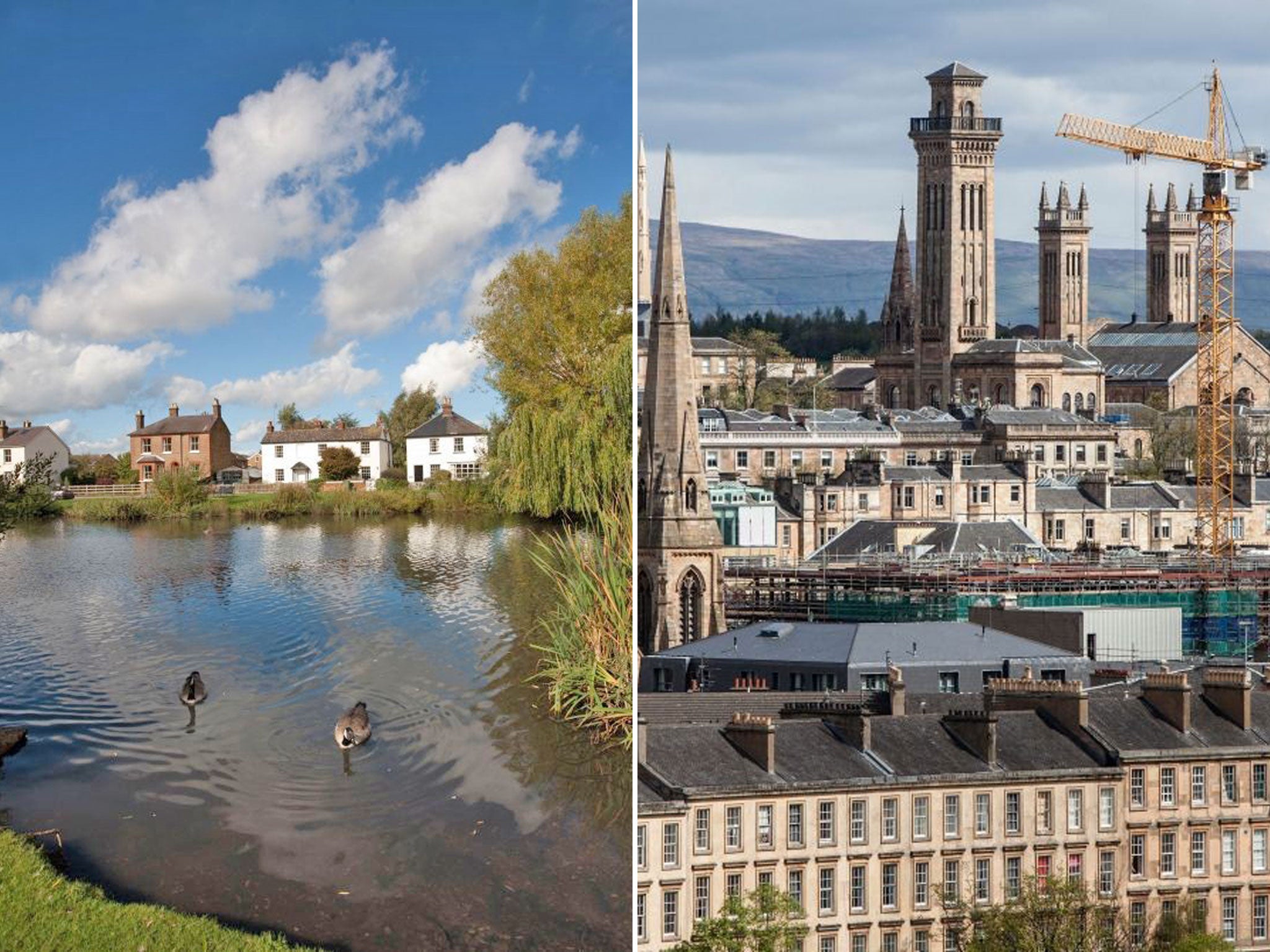10 London boroughs worth more than all the homes in Wales, Scotland and Northern Ireland

Your support helps us to tell the story
From reproductive rights to climate change to Big Tech, The Independent is on the ground when the story is developing. Whether it's investigating the financials of Elon Musk's pro-Trump PAC or producing our latest documentary, 'The A Word', which shines a light on the American women fighting for reproductive rights, we know how important it is to parse out the facts from the messaging.
At such a critical moment in US history, we need reporters on the ground. Your donation allows us to keep sending journalists to speak to both sides of the story.
The Independent is trusted by Americans across the entire political spectrum. And unlike many other quality news outlets, we choose not to lock Americans out of our reporting and analysis with paywalls. We believe quality journalism should be available to everyone, paid for by those who can afford it.
Your support makes all the difference.It is not so much a divide as a gaping chasm.
The growing disparity between house prices in London and the South-east and those in the rest of the United Kingdom was revealed today, prompting fresh concern among first-time buyers and fears for the national economic recovery.
Research shows that the net value of properties in just 10 London boroughs – Westminster, Kensington & Chelsea, Wandsworth, Barnet, Camden, Richmond, Ealing, Bromley, Hammersmith & Fulham and Lambeth – now outstrips the worth of all the properties in Wales, Northern Ireland and Scotland combined.
Elmbridge, a leafy corner of the Surrey stockbroker belt bordered by the Thames and the M25, which is home to just 131,000 people, is now worth £31bn – more than Scotland’s biggest city, Glasgow, where a population of 1.75m inhabits homes valued at £29bn. Property in the Royal Boroughs of Windsor and Maidenhead outstrips that in the whole of Cardiff.
But it is in London that the extraordinary gulf is most starkly illustrated, according to the research by the property group Savills as part of its latest Valuing Britain analysis of the UK market.
The capital’s richest borough, Westminster, with 121,600 dwellings, is worth £95bn – more than twice the value of Edinburgh (pop 500,000) and three times that of England’s sixth most populous city, Bristol.
Lucian Cook, the director of Savills residential research, said the findings showed that wealth was becoming increasingly concentrated in fewer hands, with future generations in danger of being priced out of buying in the London area and trapped for life in the rental sector.
“It is difficult even for owner-occupiers to trade between regions unless they are in other high-value areas of the UK. This might not be such a problem for people in Bath but it might be for those in Swindon,” he said. “Similarly not for those in York or Harrogate although it could be for those living in Leeds.
“If we have a market that is really constrained in terms of mortgage finance it will be very hard for areas to catch up and we expect the difference to widen in the next five years.”
The total value of the UK property market has risen by nearly two thirds in the past decade to £5 trillion although this is still 6.4 per cent off the 2007 peak.
By contrast, homes in London are worth £1.12trn, accounting for nearly a quarter of the entire value despite making up just 12 per cent of the total stock. Residential real estate in the capital is now worth 14.2 per cent more than it was at the pre-credit crunch height.
The most sought-after areas in London, such as Mayfair and Knightsbridge, continue to benefit from the influx of money from the Middle East, Asia and Eastern Europe.
However, other parts of the capital have benefited from the sheer levels of equity in the housing market, which has seen increasing amounts of cash chasing the same number of desirable properties, resulting in rising prices.
Alexandra Jones, the chief executive of the independent think tank the Centre for Cities, said future economic growth would benefit from reducing the wealth gap between London and the rest of the UK.
“Some of the cities such as Manchester, Leeds and Glasgow have improved over the past 15-20 years and have done really well,” she said. “But London has boomed and was the last in and the first out of the recession.
“There is a big worry that people can’t afford houses in places where there are jobs. That is a big problem not just locally but for the national economy. It is important to tailor policies for each individual area.”
Join our commenting forum
Join thought-provoking conversations, follow other Independent readers and see their replies
Comments